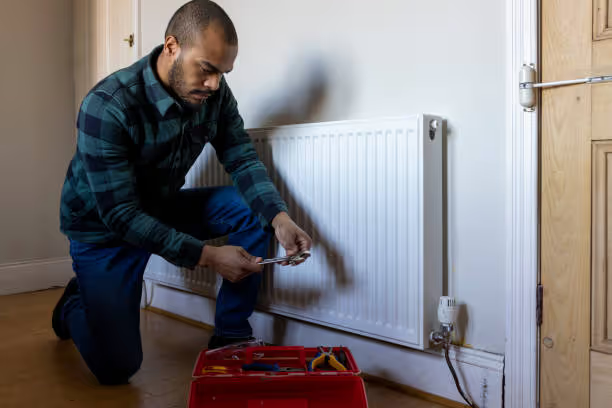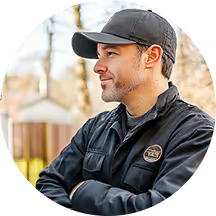This service page outlines a professional furnace tune-up in Glen Cove, NY designed to protect comfort, safety, and heating costs during cold months. It covers a comprehensive inspection of mechanical, electrical, combustion, and airflow systems, including burners, heat exchangers, coils, thermostat calibration, ignition, safety devices, airflow, venting, wiring, and lubrication. The diagnostic process emphasizes preventive maintenance and root-cause analysis. It also discusses duration, cost factors, common issues found, priority repairs, seasonal scheduling, performance gains, and simple homeowner maintenance tips.

Furnace Tune Up in Glen Cove, NY
A professional furnace tune up is one of the most effective ways to protect your comfort, safety, and heating budget during Glen Cove winters. Cold temperatures, coastal humidity, and salt air place extra strain on furnace components and ventilation systems in Nassau County homes. Routine tune ups reduce the risk of mid-winter breakdowns, improve combustion safety, and restore heating efficiency so your system runs more reliably when you need it most.
Common homeowner concerns that a tune up solves include uneven heating, higher-than-normal energy bills, noisy operation, frequent short-cycling, and ignition or pilot failures. A comprehensive tune up addresses these issues before they become costly repairs and helps extend the life of the furnace.
What a Professional Furnace Tune Up Includes
A thorough tune up covers mechanical, electrical, combustion, and airflow systems. Technicians following best-practice service protocols will typically perform the tasks below:
- Clean burners and heat exchangers
Remove soot, dirt, and deposits that reduce combustion efficiency and can create unsafe conditions. - Inspect and clean coils and blower assembly
Clean blower wheel and motor area to restore proper airflow and prevent motor overheating. - Check and calibrate thermostat
Verify temperature sensing and control logic so your system reaches and maintains setpoints accurately. - Inspect pilot and ignition systems
Test hot surface igniters, pilot valves, and electronic ignition assemblies for reliable starts. - Test safety and control devices
Verify limit switches, pressure switches, flame sensors, and gas valves operate correctly to protect occupants and equipment. - Verify proper airflow
Check air filter condition, return and supply registers, and basic ductwork for blockages or severe leaks that restrict flow. - Examine flue, venting, and combustion air
Confirm venting is clear and sealed where necessary to prevent backdrafting and ensure safe exhaust of combustion gases. - Electrical inspection and tightening
Inspect wiring, connections, and capacitors to prevent shorts or intermittent failures. - Lubrication and minor adjustments
Lubricate motors and linkages where applicable and adjust belts, pulleys, or draft as required. - Operational test and multiple-run verification
Start the system through its cycles and confirm smooth startup, steady flame, correct cycling, and stable temperatures.
Diagnostic Process: How Problems Are Identified
A professional tune up is both preventive maintenance and a diagnostic evaluation. Technicians typically follow a workflow that includes:
- Visual inspection for corrosion, leaks, or obvious damage.
- Combustion check and observation of burner flame for correct color and stability.
- Measurement of airflow across the system and static pressures if airflow problems are suspected.
- Electrical checks for voltage and amperage draw on motors and controls.
- Safety-control tests including manual trips and automatic shutdown verification.
- Functional test of thermostat and system response to setpoint changes.
These steps identify root causes, not just symptoms, which helps prioritize repairs and avoid repeat service calls.
Estimated Duration and Cost Considerations
- Duration: Most single-family, gas-fired furnace tune ups are completed in about 60 to 90 minutes. Older systems, multi-stage furnaces, or units with existing problems can take longer as diagnostics and repairs add time.
- Cost considerations: Final price depends on system type, age, accessibility, and whether replacement parts are required. Factors that influence cost include manufacturer-specific parts, required safety repairs, and any additional ductwork or venting work discovered during inspection. A tune up is generally an economical investment compared with emergency repair or early replacement.
Common Furnace Issues Found During Tune Ups in Glen Cove
Glen Cove homes often present familiar problems during service visits:
- Corroded or dirty burners from coastal salt exposure
- Reduced airflow due to clogged filters, restricted returns, or dirty blower wheels
- Cracked or degraded heat exchangers from long-term stress
- Faulty ignition or pilot assemblies causing unreliable starts
- Loose electrical connections and worn blower motors
- Improper venting or flue blockages after seasonal storms or animal intrusion
Identifying these early prevents unsafe operation and more extensive repairs later in the heating season.
Repairs and Priorities
During a tune up, technicians will prioritize safety issues first—anything that risks carbon monoxide exposure, gas leaks, or fire hazards will be addressed immediately or the system will be shut down until safe operation is restored. Common on-the-spot repairs can include replacing air filters, tightening electrical connections, cleaning burners, and adjusting controls. More involved repairs (heat exchanger replacement, motor swaps, or major venting work) are diagnosed and documented so homeowners can make informed decisions based on safety, lifespan, and budget.
Seasonal Scheduling Recommendations for Glen Cove
- Schedule tune ups in early fall, ideally before the first sustained cold snap. This timing avoids peak-season wait times and assures system readiness.
- For older furnaces, homes with heavy occupancy, or properties affected by coastal salt and humidity, consider more frequent inspections or enrollment in a maintenance plan to protect equipment year-round.
- After storms or extended power outages, run a brief safety check and inspection; venting and combustion components can be affected by debris or saltwater intrusion.
Performance and Efficiency Improvements You’ll Notice
After a proper tune up you can expect:
- Quieter, smoother operation and more consistent indoor temperatures
- Improved heater responsiveness and fewer short cycles
- Lower likelihood of mid-season failures and reduced repair frequency
- Improved combustion safety and reduced carbon monoxide risk
- Optimized airflow for better comfort and indoor air quality
Regular tune ups also help furnace components operate closer to original performance levels, which reduces wasted fuel and makes heating more predictable during Glen Cove’s variable winter weather.
Practical Homeowner Maintenance Tips
- Replace or clean your furnace air filter according to manufacturer recommendations—typically every 1 to 3 months.
- Keep returns and supply registers unobstructed by furniture or draperies.
- Clear vegetation and debris around outdoor vents and intake areas, and inspect vent caps after storms.
- Note any unusual noises, odors, or cycling behavior and have them checked at the next scheduled service.
An annual professional furnace tune up is the most reliable way to protect comfort and safety in Glen Cove homes while maximizing the useful life and efficiency of your heating system. Regular maintenance reduces unexpected repairs and helps your system perform reliably through the coldest months.
Customer Testimonials
Hear directly from homeowners who trust Bobby O’s HVAC Inc. for fast response times, honest service, and lasting comfort.











